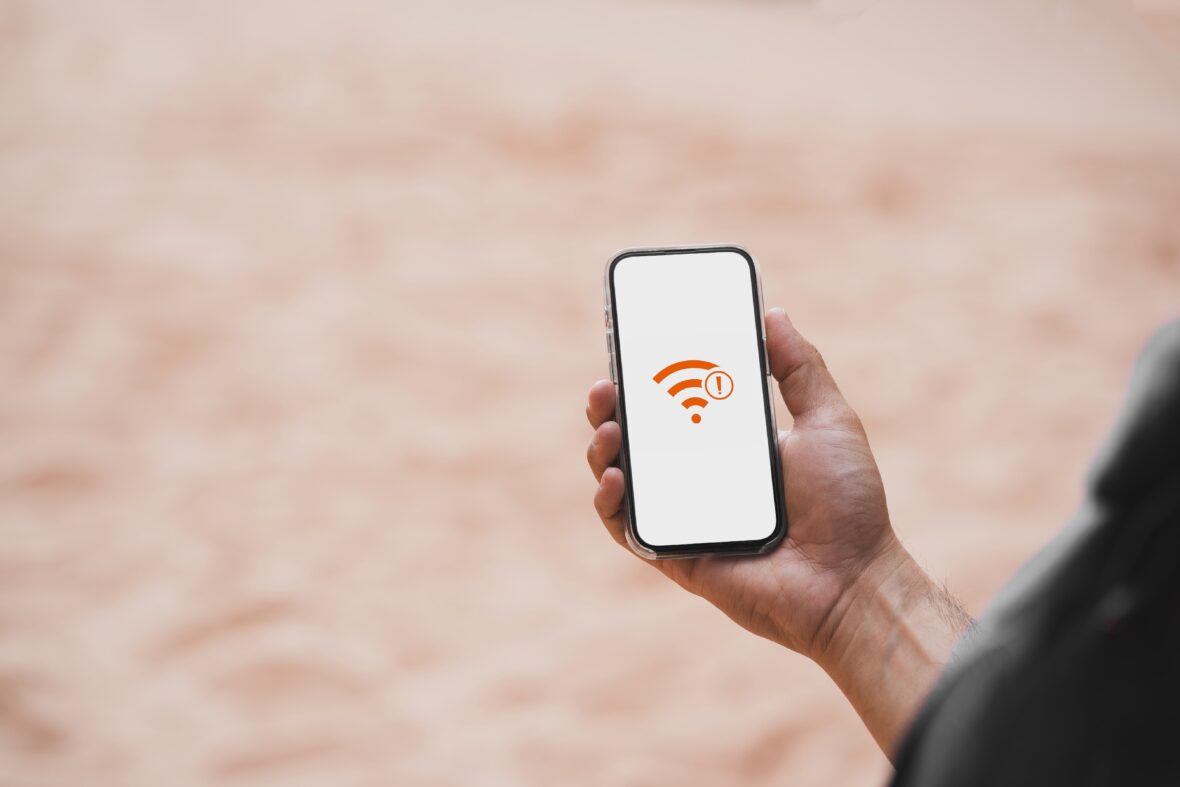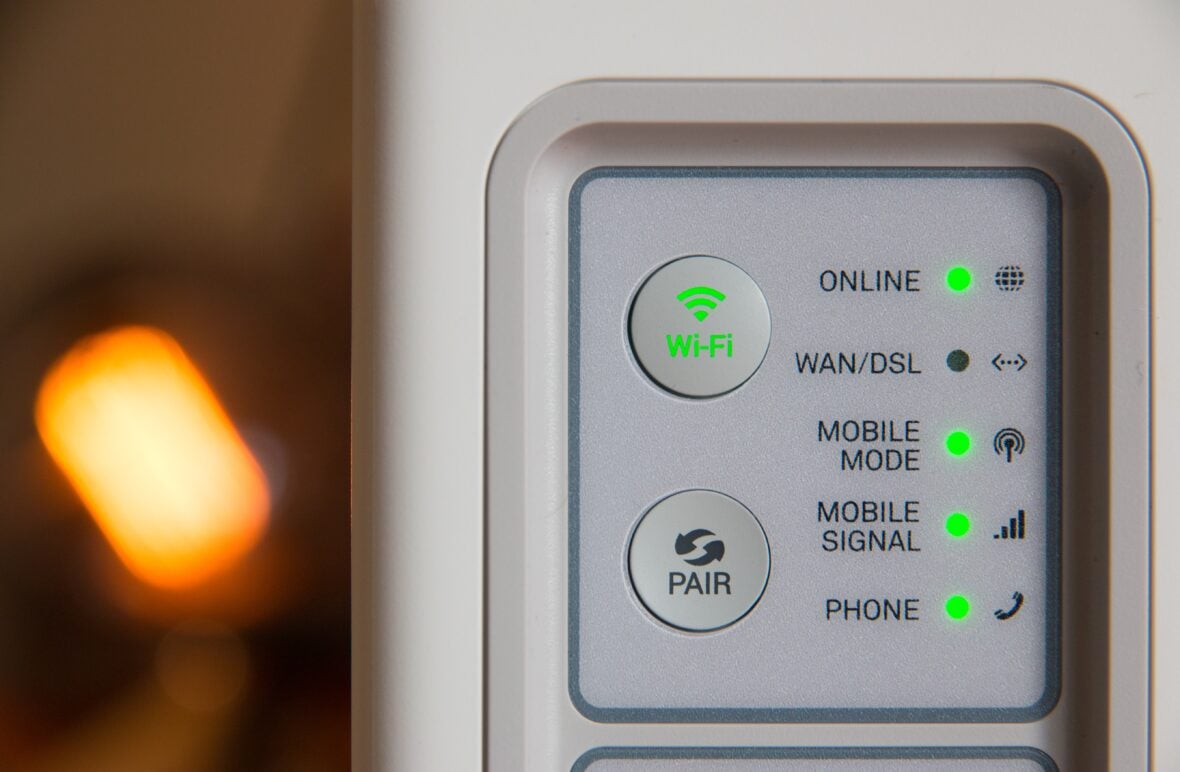
The internet has become an essential part of our daily lives that we often take for granted. From our jobs to our hobbies, we rely heavily on the Internet for almost everything.
Weak Wi-Fi signals, on the other hand, can disrupt our experience while using the internet by causing buffering and slow connectivity, both of which are very frustrating. The problem at hand becomes even more complicated when there are obstacles in the way of the Wi-Fi signal, such as walls or other impediments.
In this article, we will discuss some effective techniques for how to boost Wi-Fi signals through walls so that you can maintain your connection without experiencing any disruptions.
What Weakens Wi-Fi Signal?
In their most basic form, Wi-Fi signals are radio waves that transmit data from one device to another via a set of predetermined frequencies. When these radio waves come into contact with obstacles such as walls, it weakens the Wi-Fi signals.
Wi-Fi signals can operate on either the 2.4GHz or 5GHz frequency bands, depending on which band is available. The 2.4GHz frequency band is more susceptible to interference and attenuation. The range for this kind of band can be limited, so they do not perform as well as 5GHz when trying to penetrate obstructions.
Data is transmitted over Wi-Fi networks using electromagnetic radiation, which moves in waves at the speed of light. These waves are capable of traveling through the air, but they are susceptible to being weakened or absorbed by obstacles in their path, such as walls, furniture, or other types of physical barriers. These obstructions either absorb or reflect the waves that we know as Wi-Fi.
Wi-Fi signals can be disrupted not only by the height of the obstruction but also by its thickness and density. Thick walls made of materials such as brick, concrete, or metal are the hardest to penetrate. In a similar vein, obstacles such as water, mirrors, or glass can cause interference with Wi-Fi signals by reflecting them.
Additionally, other electronic devices, such as microwaves, cordless phones, and Bluetooth devices, have the potential to cause interference and disrupt Wi-Fi signals. This is due to the fact that they operate on similarly sized frequency bands, which can result in signals that overlap.
Check Out: Top 10 Things You Should Know About AI in 2023
How to Check Your Wi-Fi Signal Strength

Checking your Wi-Fi signal strength is an essential step to ensure that you have a stable and reliable internet connection. Here are three ways to check your Wi-Fi signal strength:
- Use a Wi-Fi Analyzer App: Wi-Fi analyzer apps are available for both Android and iOS devices. These apps scan the available Wi-Fi networks in your area and display their signal strength and other details like frequency, channel, and security type. They can also help you identify any interference or overlapping signals that may be affecting your Wi-Fi strength.
- Look for the Wi-Fi Signal Icon on Your Device: Most devices display a Wi-Fi signal icon on the status bar or in the network settings menu. The number of bars or the strength of the signal icon can indicate how strong or weak the Wi-Fi signal is. A full signal icon or all bars indicate a strong signal, while a weak signal icon shows fewer bars.
- Check the Router’s LEDs: Many routers have LED lights that indicate the strength and status of the Wi-Fi signal. These LEDs can help you identify any issues with your Wi-Fi connection, like a weak signal or interference. Check the user manual or manufacturer’s website for your router model to know which LED corresponds to the Wi-Fi signal strength.
How to Boost Wi-Fi Signals Through Walls

- Move your router to a more advantageous location, preferably one with less interference, and try using it again.
- Make the necessary adjustments to the antennas on the router to get the best possible signal coverage. Two distinct varieties of antennas can be used for routers: omnidirectional and directional. You can upgrade the antenna that is on your router to one that is of higher quality.
- Utilize a Wi-Fi range extender so that you can experience an improvement in the signal’s overall quality. There are many different types of Wi-Fi range extenders available, some of which include wall plugs, desktops, and even outdoor extenders. Make sure that you follow the instructions that are provided to successfully set up a Wi-Fi range extender.
- Installing a Wi-Fi mesh network will help improve coverage over large areas. A Wi-Fi mesh system is a network of nodes that work together to provide continuous coverage. These nodes communicate with one another to ensure seamless connectivity. Wi-Fi mesh networks work by relaying the signal from the router through several nodes.
- You should utilize a powerline adapter to extend the signal through the use of the electrical wiring in your home. This can be accomplished by using a powerline adapter. For a powerline adapter to function properly, it must be able to transmit a signal through the electrical wiring that is present in your home.
- Changing the channel of your Wi-Fi connection is an option if you want to have less interference from other Wi-Fi networks. Wi-Fi channels are the frequencies used by Wi-Fi networks to transmit data.
- Identify potential sources of Wi-Fi interference, such as microwave ovens, cordless phones, or other electronic devices, and then take steps to remove or disable them.
How to Maintain Strong Wi-Fi Signals

To maintain strong Wi-Fi signals, follow these tips:
- Download the most recent updates from the manufacturer to ensure that the firmware on your router is always current. Check for firmware updates regularly and install them as soon as they become available.
- Give some serious consideration to upgrading your existing router to a more recent model, one that not only improves the functionality of the device but also the quality of the signal that it transmits.
- When not in use, your router should be kept in an area that is dry, cool, and free from any potential sources of heat or moisture. Refrain from putting your router in a location where it will be too close to any walls or other obstacles that could potentially interfere with the signal.
- Maintain a distance of at least a few feet between your router and any other electronic devices to prevent electromagnetic interference.
- To protect your Wi-Fi network, enable WPA2 encryption and select a robust password.
- Disable guest networks to stop unauthorized users from accessing your Wi-Fi network.

15 Best iPhone 14 Pro Max Accessories
FAQs:
What Is the Best Wi-Fi Range Extender for Thick Walls?
If you are looking at how to boost Wi-Fi signals through walls, the best Wi-Fi range extender for thick walls include options like NETGEAR Nighthawk X6S Tri-Band Wi-Fi Range Extender ($349+), the TP-Link RE450 AC1750 Wi-Fi Range Extender ($59+), and the Linksys AC1900 Gigabit Wi-Fi Range Extender ($19+).
Can Aluminum Foil Boost Wi-Fi Signals?
Aluminum foil can reflect Wi-Fi signals, but it is not a reliable method to boost signal strength. It is recommended to use proper techniques such as repositioning the router or using a range extender for better signal coverage.
How Do I Check the Wi-Fi Signal Strength on My Router?
To check the Wi-Fi signal strength on your router, you can use a Wi-Fi analyzer app, look for the Wi-Fi signal icon on your device, or check the router’s LEDs.
How Often Should I Upgrade My Router?
The recommended timeframe for upgrading your router varies depending on the manufacturer and the specific model. However, it is generally recommended to upgrade your router every 3-5 years to ensure the best performance and security.
How Do I Secure My Wi-Fi Network?
To secure your Wi-Fi network, you can set a strong password, enable WPA2 encryption, disable guest networks, and update your router firmware regularly. Additionally, you can limit access to your network by using MAC address filtering or hiding your network’s SSID.
Takeaways
It is not impossible to boost Wi-Fi signals through walls, even though doing so can be difficult. If you are prepared with the right tools and strategies, you will be able to achieve uninterrupted connectivity while using the internet and have a pleasant experience overall. We have covered everything you need to know about boosting your Wi-Fi signals through walls, including moving your router, upgrading your antenna, and reducing interference. If you make sure to follow all of these recommendations, you will never have to worry about a Wi-Fi signal that is too weak again.
More About:Technology



